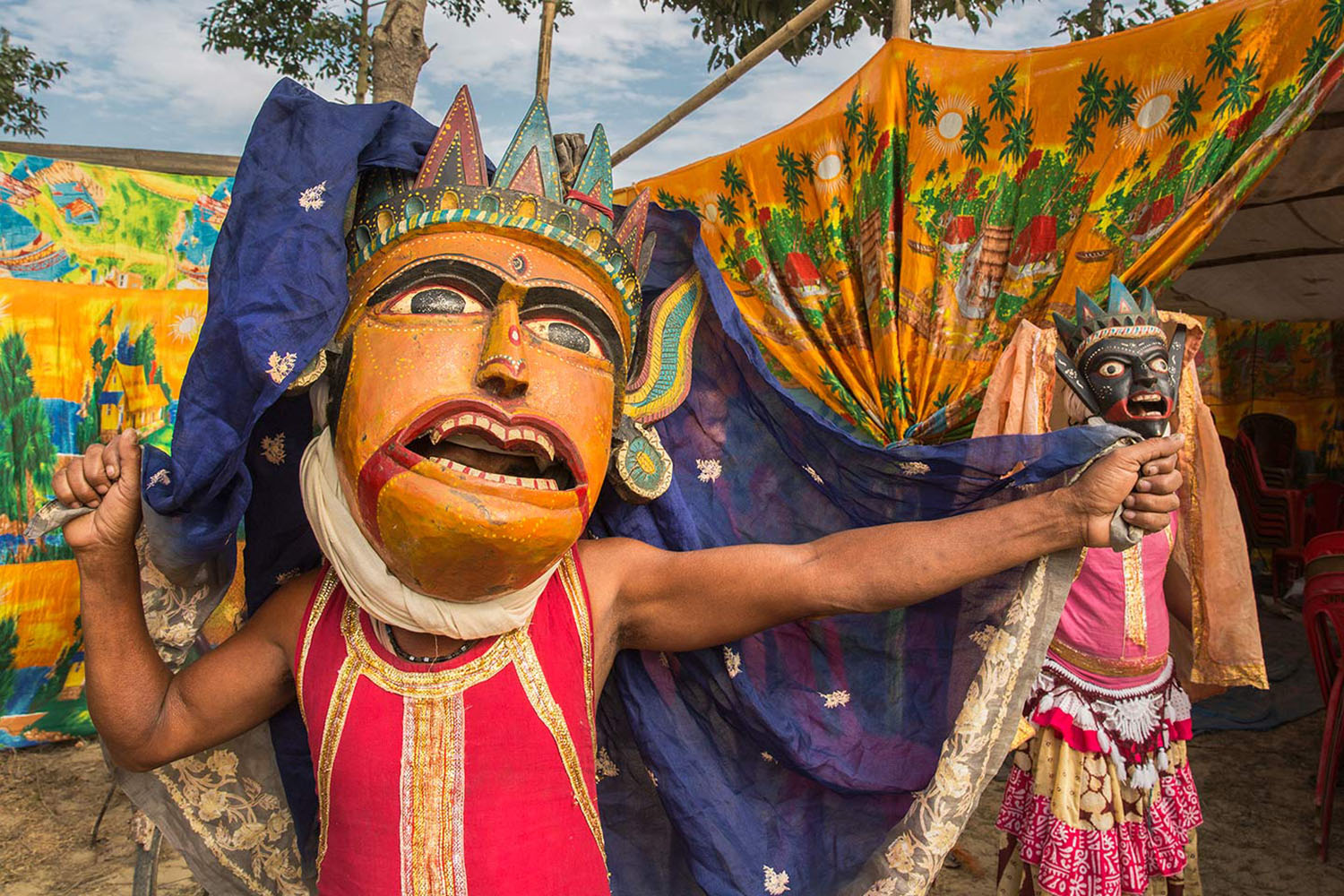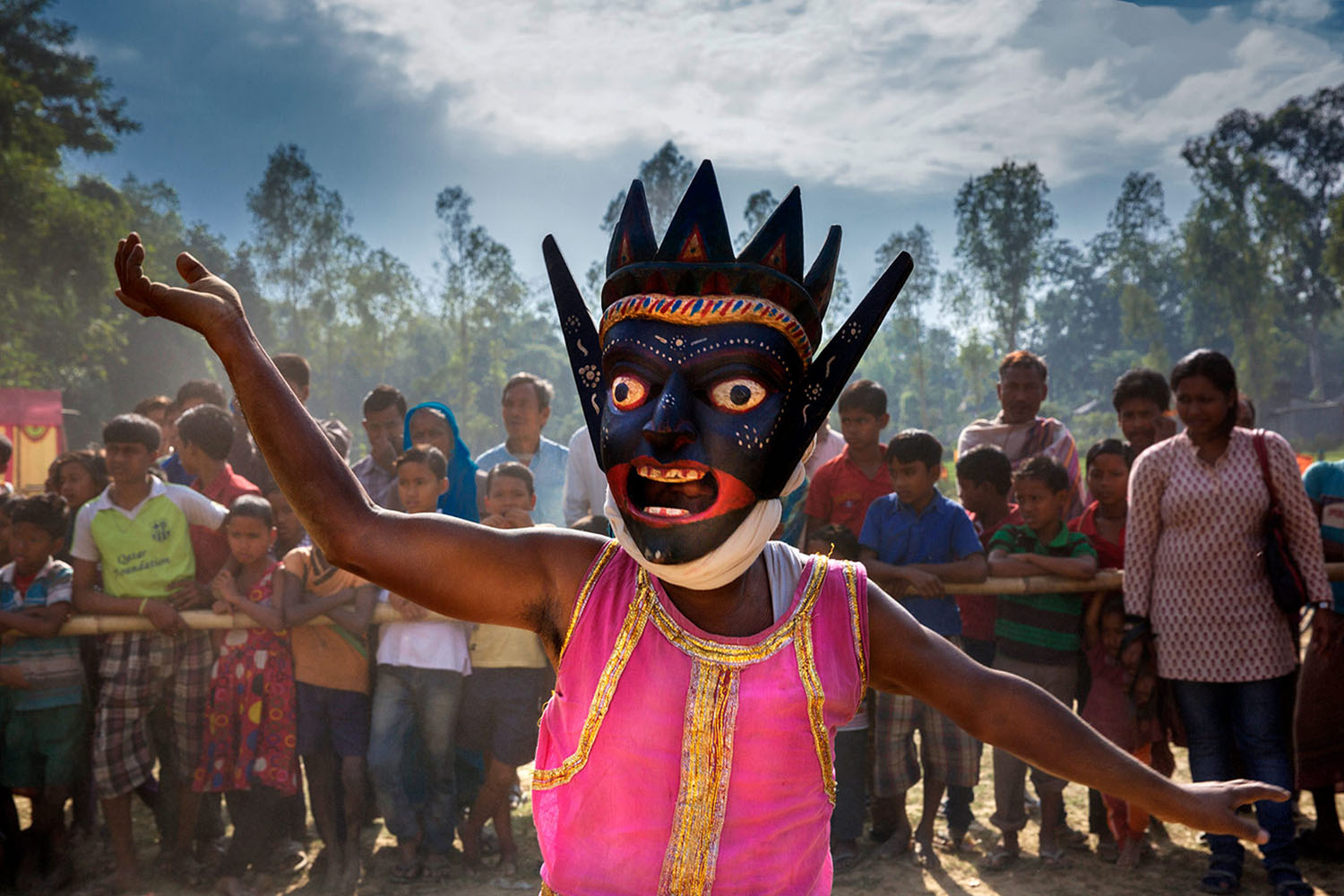ARTICLE
Gomera Masks
Distinctive wooden masks, gomera masks are used for the gomera dance in the North and South Dinajpur districts of West Bengal. The gomera dance is also called mukha khela, meaning game of masks, emphasising the importance of masks to the dance form. The word gomera probably comes from Gram-chandi, a local name for the Shakti cult, though the dance also incorporates Vaishnava and perhaps animistic influences.
Gomera dances are usually performed at the end of the Bengali month of Choitra (March-April). The dance is intended to propitiate deities like Kali and drive away evil forces. As a result, Gomera masks are often offered as sacred objects to local temples and deities. Individuals pledge a certain type and number of masks to deities when requesting that they fulfil a wish. The evening before the Gomera dance, the masks are brought out from the local temple for a midnight prayer session, called Nishi Pujo.
The gomera dance features masks for Chamunda, Smashan Kali and Masan Kali (goddesses of the cemetery), Siknidhal (derived from Shakuni, a figure from the Mahabharata), Bagh (tiger), Dakini Bishwal, Nara-Rakshas and other characters. Raamer Bonobas, an important variant of the Gomera dance, features characters from the Ramayana like Rama, Sita, Angad, Ravana and Jatayu. Performers wearing masks go into a trance (bhor) during the dance, and their behaviour is believed to reflect that of the deity represented by the mask.
Gomera masks are traditionally made by the local Rajbangshi community of mask-makers. They are usually crafted from neem (Indian lilac), shola pith (Indian cork), and sponge wood, though mango wood, pakur (a type of fig tree), kadam (Burflower tree), gamhar (white teak) and teak wood may also be used. Once the wood is acquired, it is immersed in water to soften it and then carved with chisels and light hammers. The eye and mouth cavities in the front are cut with router chisels. Sandpaper is used to smoothen it once the chiselling is completed. The back is scooped out, and varnish is applied.
Natural dyes were traditionally used for colouring the masks: a brownish red dye was made from teak trees, green from the seem bean, violet from jamun (java plum), and black from the jia tree. Enamel paint and chemical dyes are more commonly used today.
Kushmandi in South Dinajpur is a major centre for Gomera mask-making, having received several state grants to support the craft. Institutions like the Mahishbathan Gramin Hasta Shilpa Samabay Samity act as cooperatives for disseminating knowledge of the craft and supporting local artisans. The masks are produced as collector’s items as well.
Bibliography
Our website is currently undergoing maintenance and re-design, due to which we have had to take down some of our bibliographies. While these will be re-published shortly, you can request references for specific articles by writing to hellomapacademy@map-india.org.









